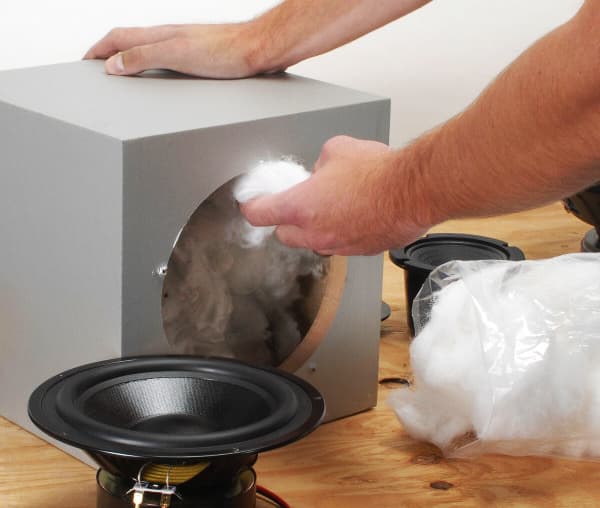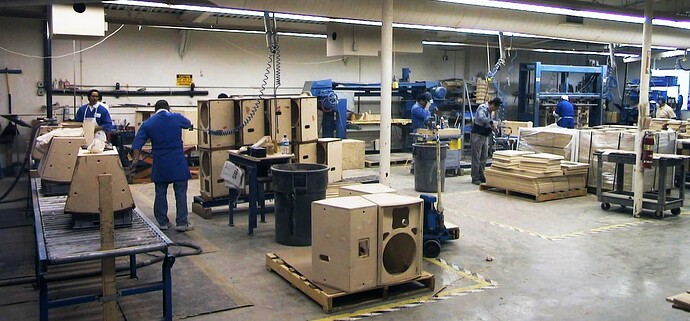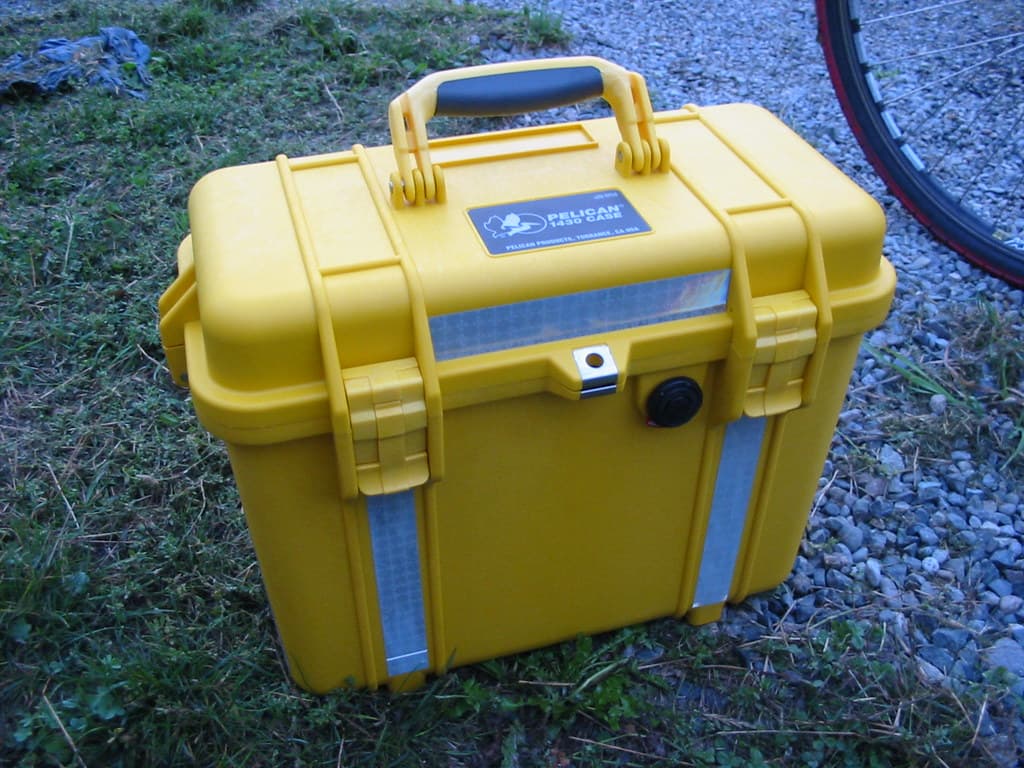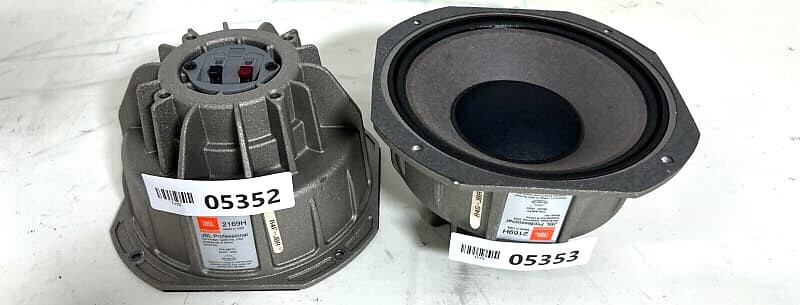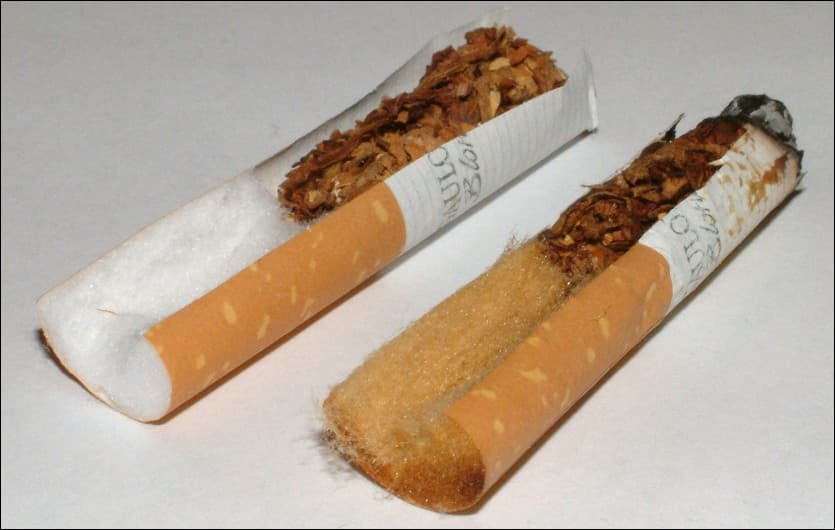you may or may not know that fiberglass is the go to choice of cabinet stuffing for corporations like JBL even though it is basically synthetic asbestos and almost as carcinogenic …
my sister died from Lung Cancer and i would never touch fiberglass myself and use plastic based stuffing and sometimes Auralex foam sparingly in strategic locations ( excess damping like foam can cause measurable distortion ).
but why does JBL use fiberglass ? the answer is that stuffing makes apparent box volume larger and this is entirely due to the stuffing moderating the temperature of the air in it. as the speaker compresses the air it makes the air warmer, which expands the air causing it to push back on the speaker - if something ( stuffing ) can instantaneously absorb the heat preventing the air from getting warmer then it won’t push back as much and will make the box appear larger to the speaker.
obviously this cooling effect is local to the stuffing itself. we aren’t talking about long-term cooling but microsecond cycles. the air in direct vicinity of ( micrometers ) of the fiber filaments will be cooled by them on compression cycle then warmed on expansion cycle. in effect the stuffing acts as an intercooler on a turbocharged engine.
and the reason fiberglass is used by companies like JBL instead of polymer stuffing is because when you touch a glass table versus a plastic table - which one feels colder ? that is literally the reason.
as a DIYer it is absolutely not worth the risk of lung cancer, but for a corporation like JBL it gives them more performance per dollar and that’s all they care about … they don’t care if the worker in their Mexico plant gets cancer from handling fiberglass …
pictured: Mexicans making JBL speakers ( pic is from Mexifornia, but they have plants in Mexico too )
but that’s not the scary thought …
the scary thought is - but what about sealed speakers ? as the speaker works it will gradually heat up the air overtime, expanding it - wouldn’t this press on the speaker pushing the Voice Coil ( VC ) out of the gap ?
logically in some circumstances this would happen unless there is some air leak or the speaker is very low power and can’t add meaningful amount of heat to the enclosure.
my Pelican cases have an automatic purge valve to equalize air pressure on airplanes for example
shouldn’t sealed speakers have something like this ?
we worry about speakers overheating in a sealed cabinet - but realistically if the cabinet is ACTUALLY sealed ( with no air leaks ) overheating is the last thing you need to worry about because the cone will get pushed out of the basket long before air temperature becomes a cooling concern.
clearly as i never heard of this actually happening this isn’t a huge issue in the real world but it MIGHT be under some circumstances ( perfectly sealed enclosure of large volume with speaker operating at high power levels for extended periods of time )
i suppose the reason we don’t normally run into this issue is because long term high power is only found in prosound settings and all prosound speakers are vented - well, the low frequency ones anyway.
pictured: a negative image of JBL VTX B18 subwoofer with its “SlipStream™ double-flared exponential ports”
mids and highs in prosound are sealed, yet somehow avoid this issue. i wonder if they don’t expand much because the volume of air is small to begin with or if there is some leak built into them.
pictured: JBL 2169H 8" Midrange
be warned, however, that if you put a small gap into a sealed subwoofer it will make farting noises. i experienced this on one of my subs that i built using double wall thickness which resulted in panels not perfectly aligning and there was a small gap ( before i patched it up ) that made loud farting noises.
my advice is of course to use vented bass enclosures even if they are tuned so low that the vent basically does nothing. you NEED a vent if you don’t have room gain, but if you have good room gain you can still use a vent - just tune it way lower than normally to take advantage of room gain.
sealed is only really a good idea if you’re in a really small and airtight room where you could hit like 5 hz with room gain. obviously tuning below 5 hz is not practical so in this case you just go sealed.
still you might have a large midrange for which you build a sealed rear chamber and that air volume might potentially heat up at which point you may want to ask yourself - is there anywhere for the extra volume of heated air to go other than into pushing the cone out ?
again, i have never heard of this actually happening, but i think you should be aware that it theoretically might if various factors line up just wrong. even slight VC misalignment would significantly increase distortion in a high-end driver with symmetrical motor and suspension characteristics, so a good design should rule out the possibility.
a very small resistive vent ( say made out of a cigarette filter ) could be a potential solution, but again, nobody has done this to my knowledge so there may be unforeseen problems with the approach. also a cigarette filter would probably be way too much of a vent for any reasonable size enclosure. maybe you could use like 1/4 of a cigarette filter or something like that.
figure it will take the enclosure probably an hour to heat up and then displace some small percentage of its volume in that period of time. so the vent will only need to pass that much air in an hour and really can be very, very small.
i suppose you could test the enclosure for air tightness by putting a soft weight on the cone ( like a bag of rice or something ) and observing whether it will sink overtime. the result you want is that the cone will sink over a course of a few minutes and then as you remove the weight it gradually comes back to original position over a few minutes as well.
if the cone goes down instantly the enclosure is not sealed at all and will probably have issues. and if it never goes down then it is too airtight.
the other consideration for any kind of VC misalignment is amplifier DC bias. that is if there is some constant DC offset without any signal. a good amplifier shouldn’t have this but if there is any kind of subsonic BS going to the speaker adding a resistive vent like this could potentially make the issue worse. with active speakers ( that is, no capacitor ) it’s something to potentially think about.
